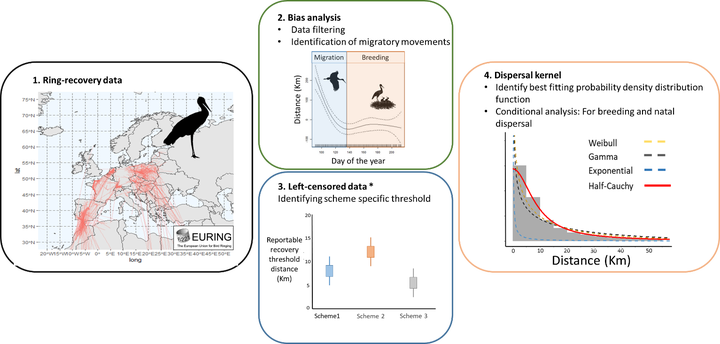Standardised empirical dispersal kernels emphasise the pervasiveness of long-distance dispersal in European birds

Abstract
Dispersal is a key life-history trait for most species and essential to ensure connectivity and gene flow between populations and facilitate population viability in variable environments. Despite the increasing importance of range shifts due to global change, dispersal has proved difficult to quantify, limiting empirical understanding of this phenotypic trait and wider synthesis.Here we aim to estimate and compare empirical dispersal kernels for European breeding birds considering average dispersal, natal (before first breeding) and breeding dispersal (between subsequent breeding attempts), and test whether different dispersal properties are phylogenetically conserved.We standardised and analysed data from an extensive volunteer-based bird ring-recoveries database in Europe (EURING) by accounting for biases related to different censoring thresholds in reporting between countries and to migratory movements. Then, we fitted four widely used probability density functions in a Bayesian framework to compare and provide the best statistical descriptions of the average, the natal and the breeding dispersal kernels for each bird species.The dispersal movements of the 234 European bird species analysed were statistically best explained by heavy-tailed kernels, meaning that while most individuals disperse over short distances, long-distance dispersal is a feature in almost all bird species. The overall phylogenetic signal in both median and long dispersal distances was low (Pagel’s λ textless 0.40), implying a high degree of taxonomic generality in our findings. As expected in birds, natal dispersal was 5 Km greater as an average than breeding dispersal for most species (88% species analysed).Our comprehensive analysis of empirical kernels indicates that long-distance dispersal is common among European breeding bird species and across life stages. The dispersal estimates offer a first guide to selecting appropriate dispersal kernels in range expansion studies and provide new avenues to improve our understanding of the mechanisms and rules underlying dispersal events.